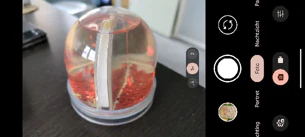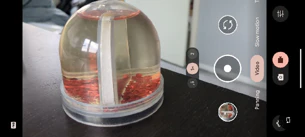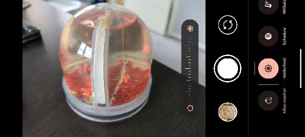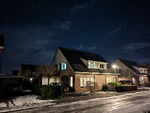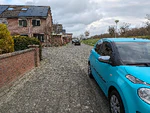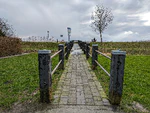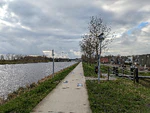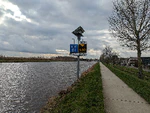Google Pixel 7a review
The design may be obsolete in a few years, but the software is not
This year's Google Pixel 7a doesn't feel like a Pixel A phone. We mean that in a positive way. For example, the display refresh rate has gone up, and there is wireless charging this time. These additions make it very difficult for the Pixel 7. Let's find out whether that comparison holds up.
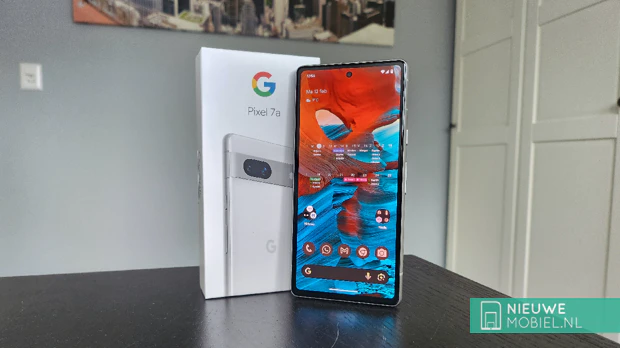
- Pros: Faster than expected, feels more expensive than it is, the camera shoots fast and well, fast and long-lasting updates
- Cons: Slow fingerprint scanner, occasional hiccups, design with sharp edges, settings a bit basic
Google has been releasing A-versions of its Pixel phones since 2019. These models are competitively priced without sacrificing camera performance. And although there have been some tweaks over the years, for instance, the XL versions, the original formula hasn't changed.
Contents of the box
USB-C to USB-C cable
USB-C (male) to USB-B (female) adapter
SIM card eject pin
Safety, warranty, and regulatory guide
This Pixel 7a, however, is an oddity. Google increased not only the specs but also the price. It has already dropped quite a bit at the time of writing, and we hope Google learned from this. Since many specs are now equal to the Pixel 7, there is little reason to choose the latter. Those who want to go more premium are better off buying the already available Pixel 8.
However, when you want a Google phone with its unique Pixel features for as little money as possible, then you can't ignore the 7a. It gets competition from the Samsung Galaxy A54 5G, which is a tad larger and has a smoother 120Hz display.
Design
Pixel phones have been quite angular in recent years, and this 7a is no different. It fits nicely between the 7 and 7 Pro. The size almost matches its predecessor, the Pixel 6a, but compared to the Pixel 7, it is a bit more compact. Yet, because of its angular corners, it feels pretty hefty. Its weight is also quite significant.

The front side consists of a 6.1-inch glass panel. Google uses Gorilla Glass 3 out of 2013 instead of the newer Gorilla Glass 7 (Victus) as on the Pixel 7. Version 3 is less drop-resistant than more recent generations, but it does not seem more scratch-sensitive. For example, our review sample is still scratch-free after weeks of heavy use.
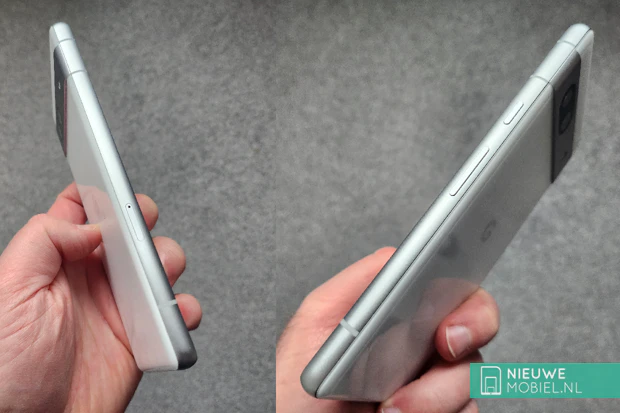
The glass subtly folds into the aluminum bezel. That edge on the Pixel 7a is convex in shape and matte in finish. Only the various antenna edges are visible. The transition from the glass to the frame feels a bit sharp. All buttons sit on the right side, with the snooze button at the top and a single elongated volume button below. Compared to other phones, these buttons sit pretty low, almost in the middle of the device. During testing, we accidentally pressed them several times. Also, by touch, the power button is not easily distinguishable from the volume buttons.

The back of the Pixel 7 is plastic but does not feel cheap. It has a smooth finish, but you won't see fingerprints on it anytime soon. The camera bar is what stands out the most. It is elevated and stretches across the entire width of the phone, allowing you to recognize a Pixel immediately. Moreover, it doesn't wobble when lying on a table. Something we can greatly appreciate. The bar is also made of aluminum and has only one scratch after three weeks of testing.
At the bottom, we see a USB-C port with a speaker and microphone. On top is also a dot, probably for a second microphone. All in all, this is a pretty standard design that, as far as we're concerned, comes across as pretty robust and, therefore, will last for years.
Screen
Google uses an AMOLED screen with a diagonal of 6.1 inches and a 2400 by 1080 pixels resolution. The screen refresh rate has increased from 60 to 90Hz, making animations look smoother. You have to enable this setting yourself under Settings > Display > Smooth Display. Google warns that this does increase battery consumption, but trust us when we say it's worth it.
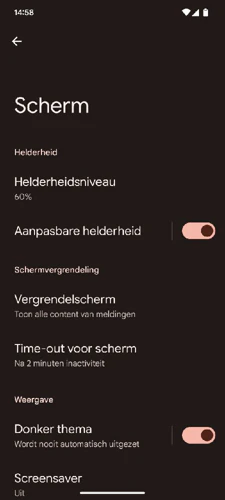

The color reproduction is a bit bland, especially when someone is used to a vibrant Samsung screen. Even when you choose "Customizable," Google's vivid screen mode. There are not many other settings, a recurring theme on Pixel phones.
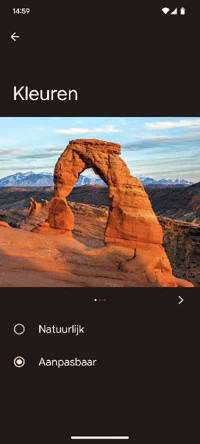
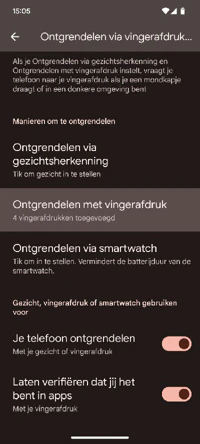

Viewing angles are good, and brightness is acceptable. The screen also dims well in dark situations. We believe the delay in turning back the brightness is too long. It will take getting used to. The fingerprint scanner is built into the screen. It is an optical scanner that emits light to recognize fingerprints. The disadvantage compared to ultrasonic fingerprint scanners is that they are slower. And you notice that. You have to rest your finger on it for a while. Sometimes, it even takes two tries. When you turn on facial recognition, it makes unlocking the phone a bit faster in our experience.
Performance
Like the Pixel 7 (Pro), the Pixel 7a has a one-year older Tensor G2 processor. Google designed this chipset based on a Sams3ung Exynos chip. It is manufactured on 5nm and has eight cores. The Tensor does not do well when compared
to the Qualcomm Snapdragon 8-chip. The Tensor G2 doesn't outperform the Snapdragon anywhere. That does not bode well.
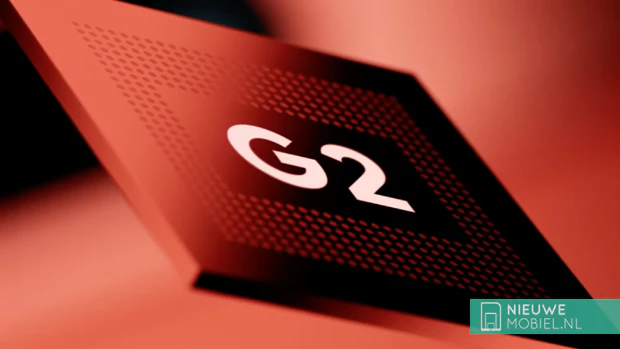
But in practice, this isn't as bad as it sounds. Google has primarily made up the difference in performance by optimizing the software. The many animations, for example, unlocking, opening apps, and returning to the app drawer, look tremendously smooth. Pixel 7a analyzes your usage, predicts what you want to do next, and acts accordingly. This creates a faster device than it is, which is very clever.
But sometimes, you open an app Pixel didn't expect or want to do something immediately when you notice a hiccup. Given the price, we can forgive that. We think it's incredibly clever how it manages to hold its own in everyday life.
Software
Our Pixel 7a came with Android 14 despite coming out with Android 13, and herein lies the strength of a Pixel phone. New Android versions are delivered quickly, and security updates arrive as punctual as Japanese trains. Google promises to release new Android versions until May 2026 and security updates until May 2028. Try finding a mid-range Android phone that will be maintained that long.

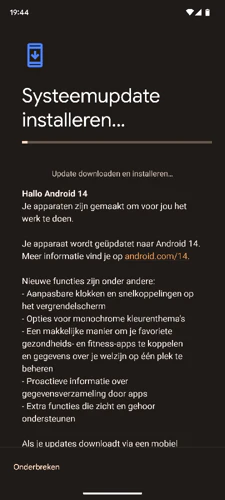
However, this is the bare Android version, and the included Launcher is very stripped down. For example, notifications can be shown as dots on top of an app icon but without a number. For instance, you won't know how many WhatsApp messages you've received without opening the app. Swipe away the notification in the overview below the status bar, and the dot disappears without returning, even when you get follow-up messages—missing entire conversations in the process.
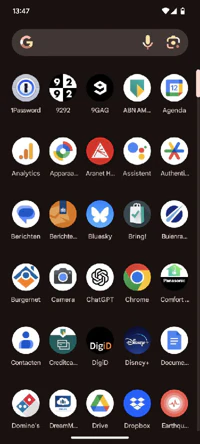

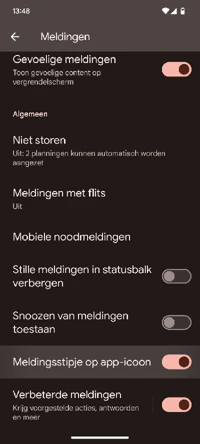
Of course, there is the option to install alternative launchers like Nova Launcher, but it will always be slower than Google's stock Launcher. Hopefully, some functionality will be added here in the future.
Hardware
New this year is wireless charging, something Samsung's Galaxy A54 does not have. Wireless charging is maxed out at 7.5 watts versus 20 watts on the Pixel 7, and reverse charging is missing. You can't reverse charge your Pixel Buds case wirelessly, for example. Wired charging is maxed out at 18 watts, whereas the Pixel 7 does 30 watts. Both are not particularly fast, by the way. So, plugging in your Pixel every night is necessary.

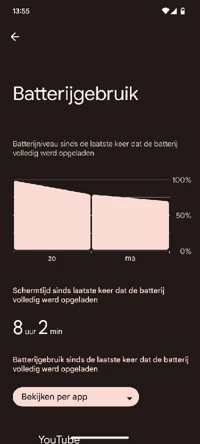
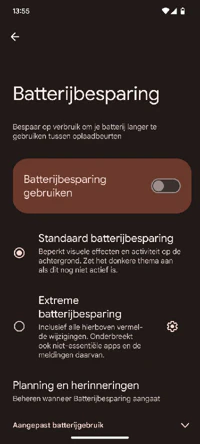
By default, the Pixel 7a suggests using "Adaptive Charging". By analyzing your daily usage patterns, it knows when you wake up and slowly ensures the battery is fully charged. This prevents unnecessary battery degradation.
We quickly made it through a day during our test, even with heavy use. If you can't make it, there is a saver mode. This limits visual effects and activity in the background activity mode. If you still can't make it through the day, there is an "Extreme Battery Saving Mode." It then also pauses non-essential apps (user-selectable) and notifications.
Camera
A big plus of any Pixel phone is its camera. The Pixel 7a has two at the back: a 64MP primary camera with f/1.9 wide-angle lens and a 13MP ultra-wide-angle with f/2.2 lens. A separate lens for optical zooming is missing, but the 7a manages to zoom 2x with the same quality due to the size of the primary sensor and some AI software trickery. And while we usually advise against digital zooming, with the Pixel 7a, we can warmly recommend it.
The camera app is pretty simple in design. It has a slider for photos and videos. The modes (long exposure, portrait, photo, night vision, panorama, and 360° photo) sit next to it, followed by a large round shutter button. Most striking is how quickly a picture is shot. There is almost no delay between pressing and saving—something we don't see with every phone.
Camera enthusiasts can manually adjust brightness, shadow, and white balance, but you can leave that to Pixel just fine. Amazingly, the results are almost always good.

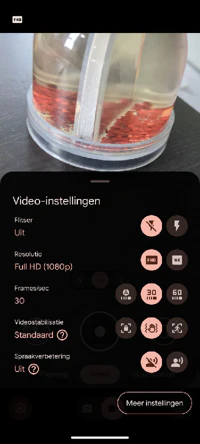
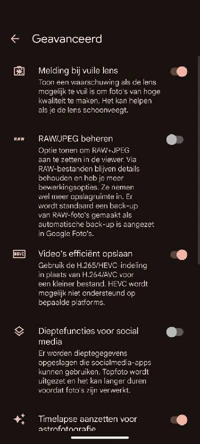
By default, the "Top Photo" option is on. This will record a short video clip when you press the shutter button. Pixel then chooses the best shot from that sequence. It gives you a better chance of shooting a good action photo but does take up more space. Something you already don't have much of with 128GB of storage.
Photos have true-to-life color reproduction with excellent HDR properties. Taking pictures with backlighting is no problem. Editing a picture is also a treat. Images can be sharpened, especially the face. The Pixel 7a can also automatically enhance photos, producing better results nine times out of ten.

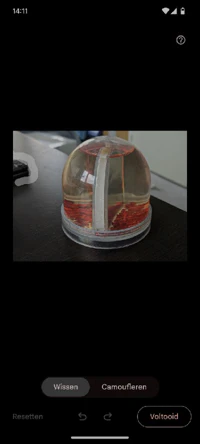
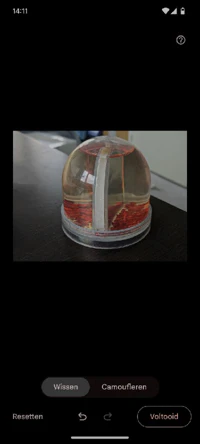
Under tools, you can access portrait blurring and adding depth. You will also find the magic eraser there. This feature allows you to circle a subject in your photo, after which it is erased. Results are hit-and-miss but sufficient for most. Besides erasing, you can also choose camouflage, making the subject black and white and, therefore, less noticeable. This is ideal when someone in the background has an eye-catching colored coat.
The promised Magic Editor is not (yet) available at the time of writing. It was pledged to, though, and allows you to move objects within a photo. Video can be recorded in Full HD (1080p) and 4K, but it must be said that the stabilization at the higher 4K resolution becomes significantly slower. Those who like smooth video are better off sticking with FHD.
Conclusion
My first Pixel phone was a 2016 Pixel XL. That one cost me over a thousand euros, was almost the same size as this 7a, and changed how I shoot photos. This Pixel 7a costs half that much, has a much larger screen, longer battery life, feels blazingly fast, and shoots even better pictures. Looking back from time to time is needed to see how much progress has been made.
Google will service the Pixel 7a for five years, which is longer than usual for a mid-range phone. In daily use, it doesn't feel slower than a twice-as-expensive high-end flagship. It shoots comparable image quality photos and even has a smooth screen and wireless charging. It can't do optical zooming but comes close by combining hardware and software optimally.
The price is favorable, and by that, we don't have to think long to give it a positive buy recommendation. The angular design may be dated in a few years, but the software will still be fresh and new.

